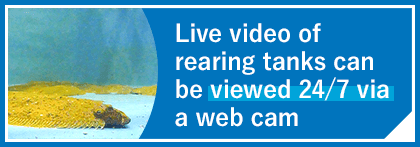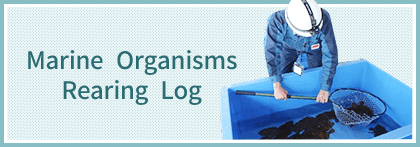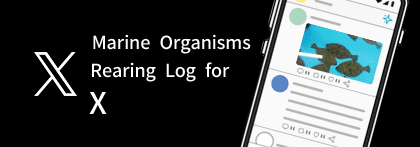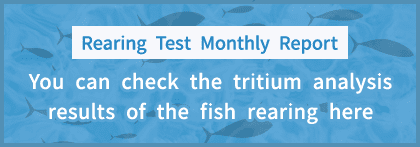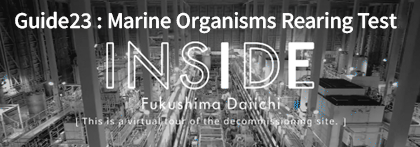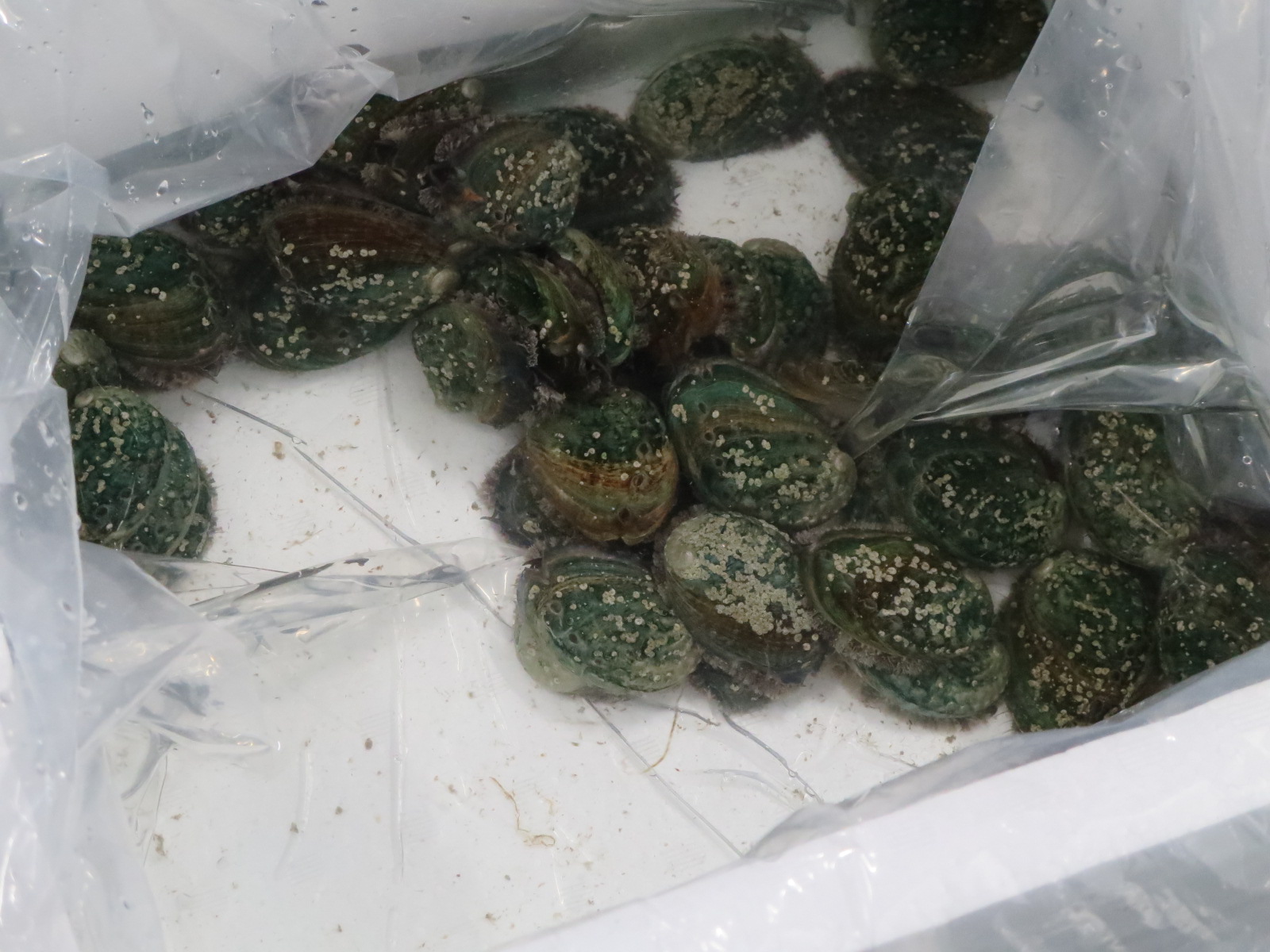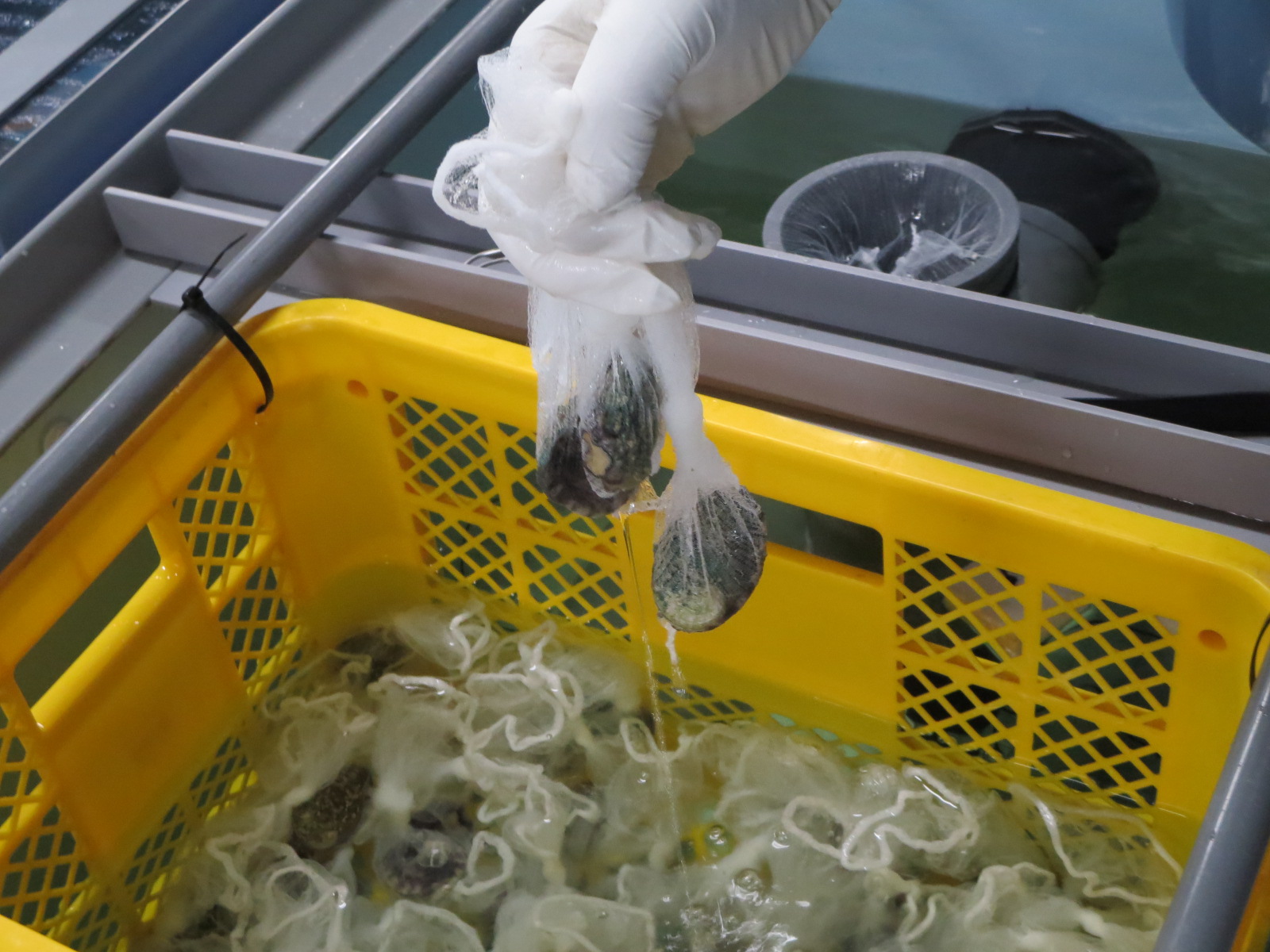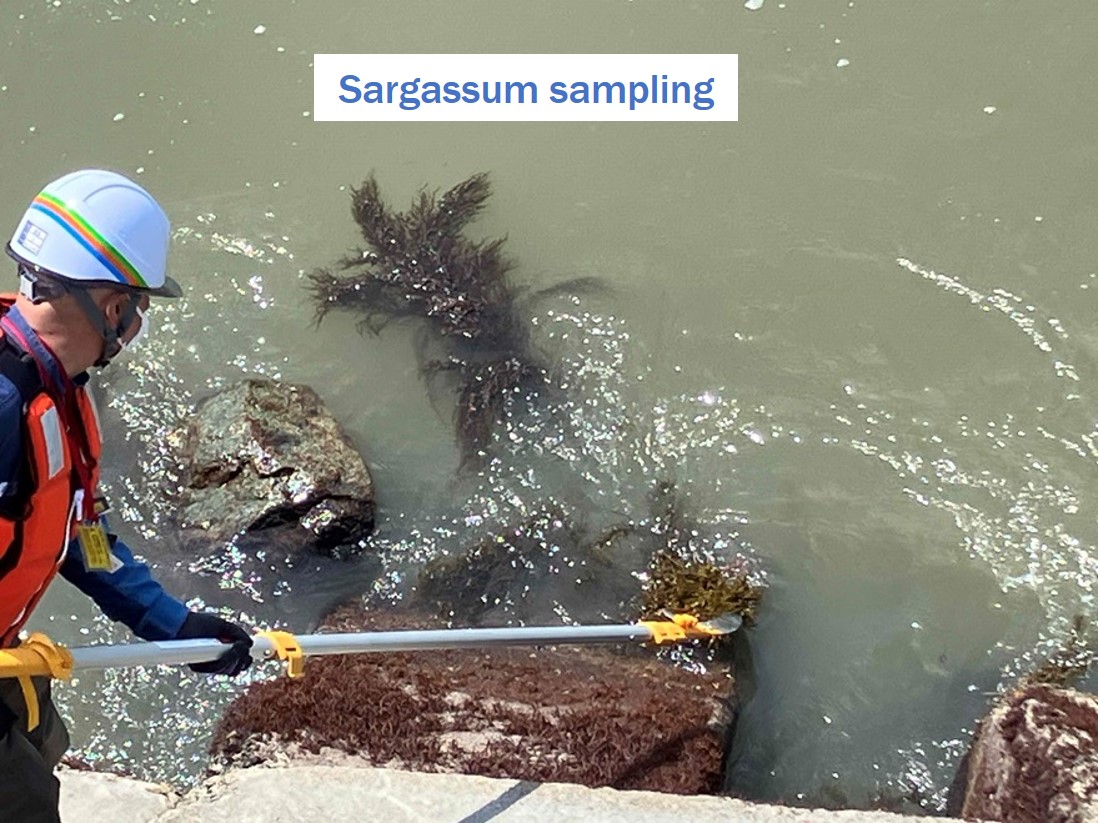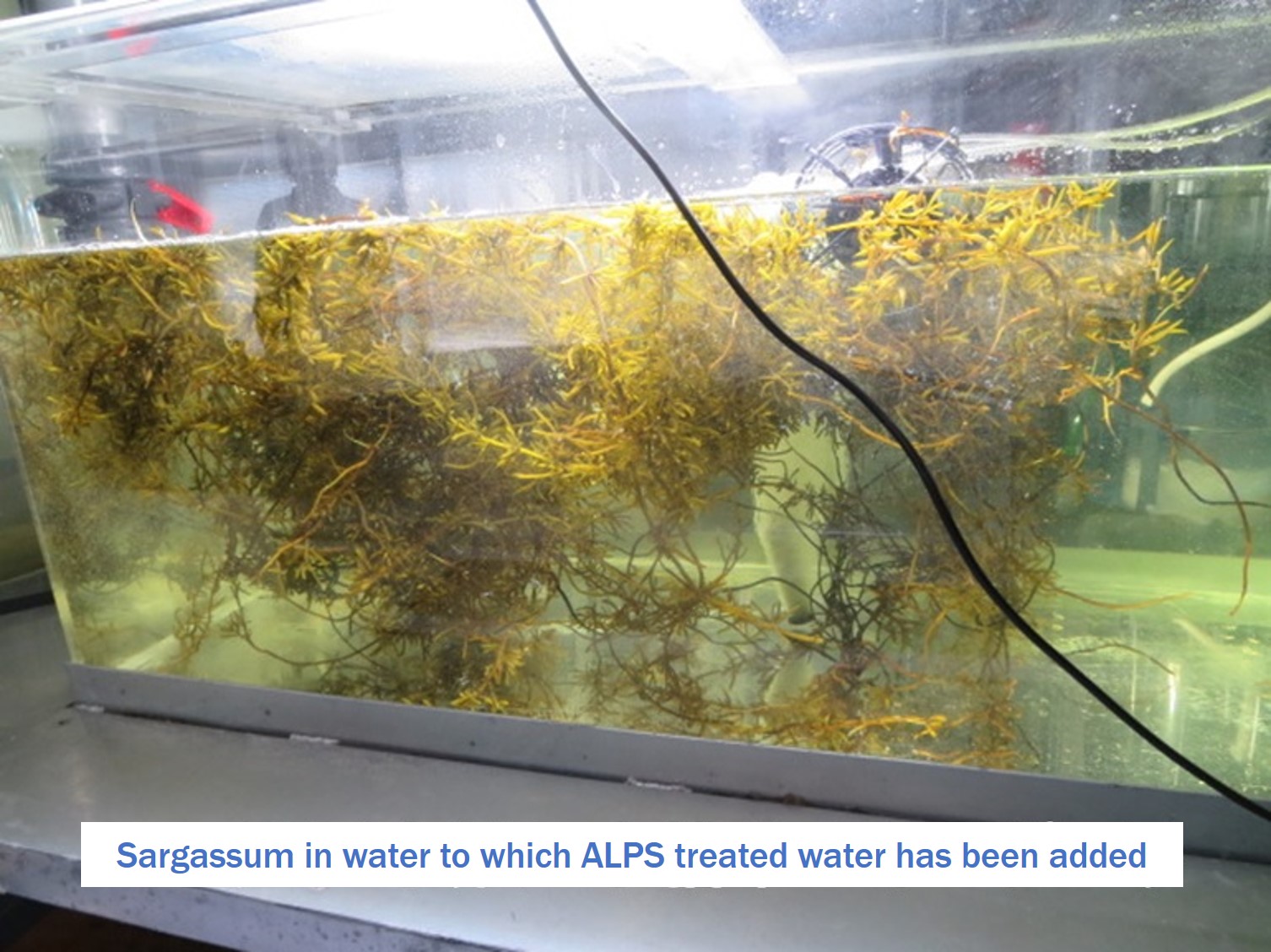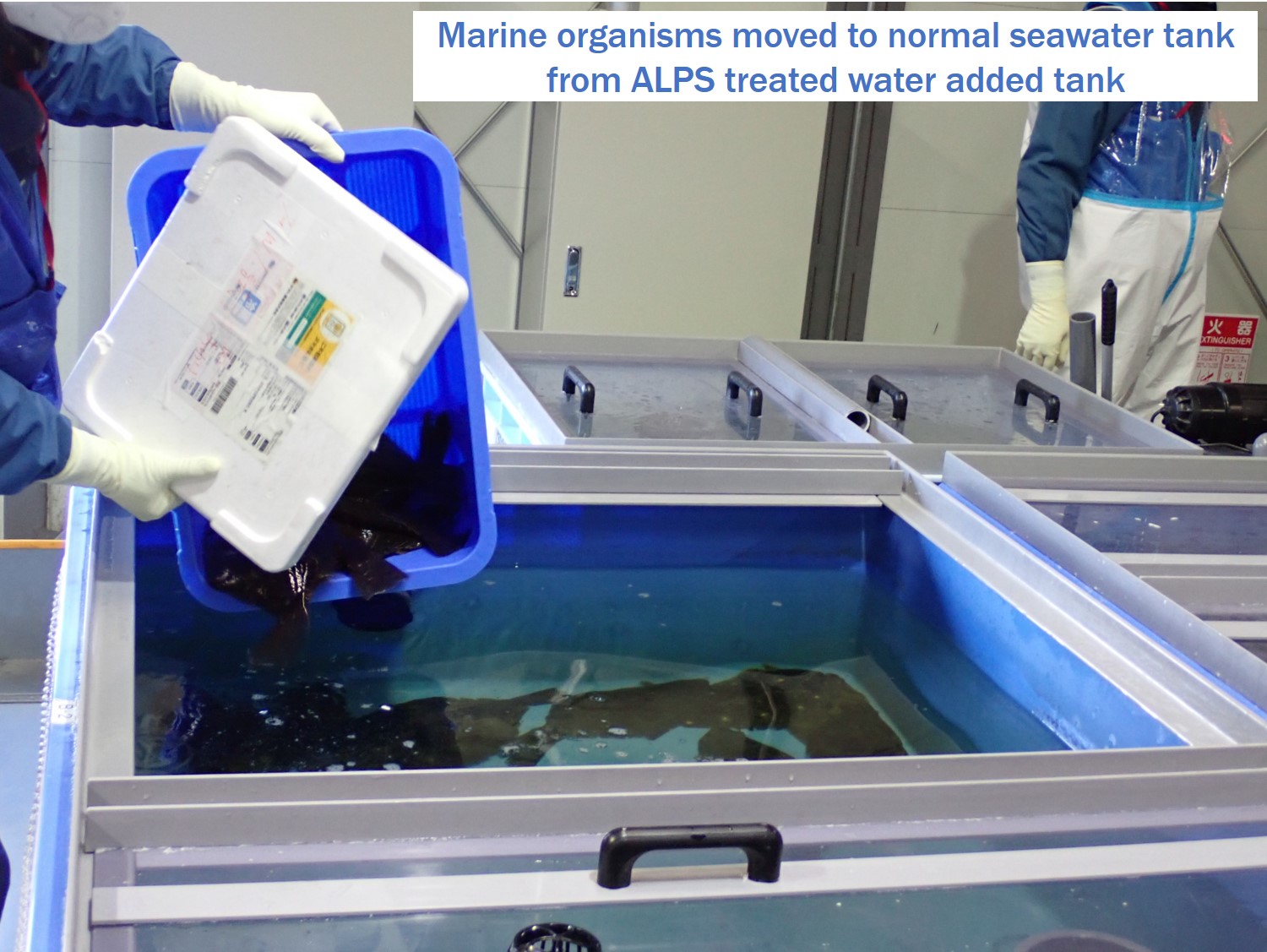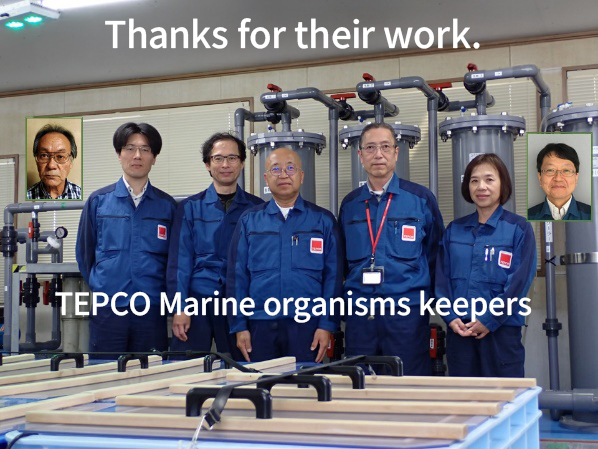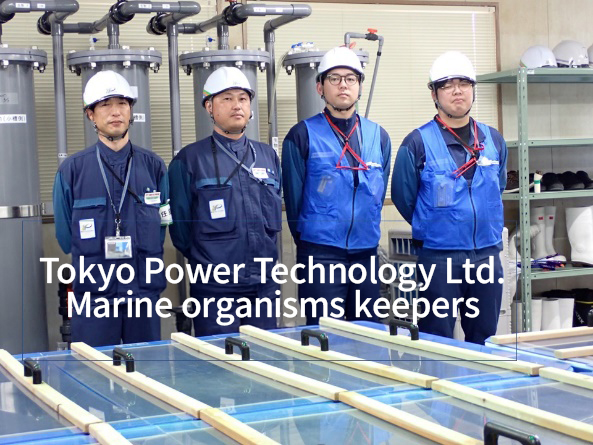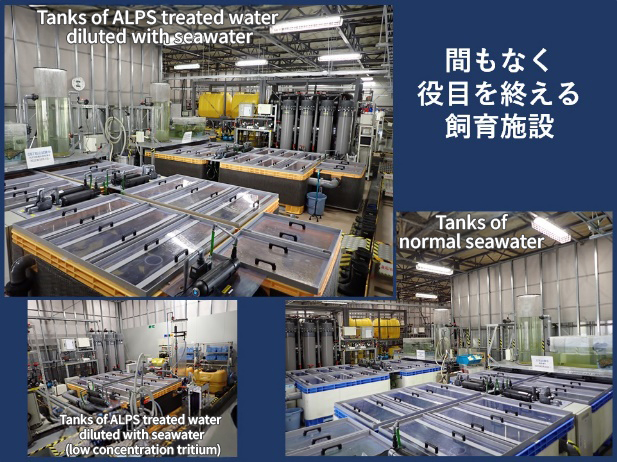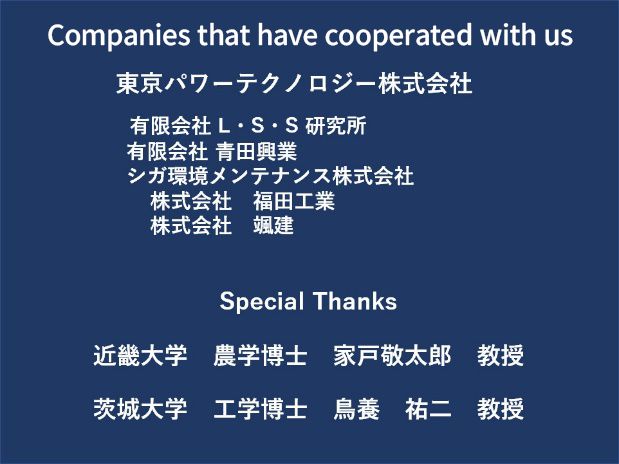Regarding the Marine Organisms Rearing Tests using ALPS treated water, which have been conducted since 2022, all planned tests have completed and the rearing tests were terminated on March 31, 2025.
What is Marine Organisms Rearing Tests (terminated in March, 2025)
Marine organisms were reared in ALPS treated water diluted with seawater.
"Marine organisms rearing tests" is a series of initiatives that TEPCO actually reared marine organisms including flounder and abalone in ALPS treated water diluted with seawater and released rearing condition and results, in conjunction with the ALPS treated water discharging into the sea.
TEPCO started rearing practice in March, 2022 before ALPS treated water discharging into the sea, and conducted rearing test using ALPS treated water from October, 2022 through March, 2025.
During the rearing tests, information including the status of marine organisms rearing tests, what the tests revealed and live video footage was released in a timely manner on TEPCO's website and SNS.
Disclosure of rearing condition
The status of marine organisms rearing tests is widely disseminated in a timely manner through rearing log entries on website and X, rearing footage on YouTube.
You can see the archives at the following links.
What we hope to prove with the Marine Organisms Rearing Tests
We have shown following results of rearing tests in a visible manner.
Rearing tests were conducted in both "normal seawater" and "ALPS treated water diluted with seawater". The marine organisms in these two environments were compared via rearing data to confirm there are no significant differences between the two populations.
Similar trends to "tritium is not concentrated in the living bodies and that the concentration of tritium in living bodies does not exceed that of the rearing environment," scientific finding reported by several institutions in the past were confirmed in the "marine organisms rearing tests."
* These results of tests are presented in a pamphlet and video.
【Pamphlet(only in Japanese)】
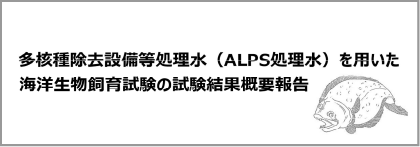
Rearing Tests Details
| Rearing environment |
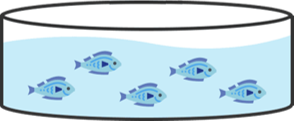 (1) Normal seawater |
 (2) ALPS treated water diluted by the |
 (3) ALPS treated water diluted by the |
 (4) Water to be discharged into the environment [approx. 260Bq/L] |
|
|---|---|---|---|---|---|
| Subjects bening reared ・ the tests started |
Flounder |
|
|
||
| Abalone |
|
|
|||
| Seaweed |
|
|
|||
Environment set in rearing test
-
1 Normal seawater
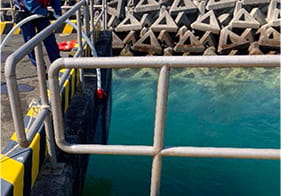
-
2 ALPS treated water diluted by the seawater below 1500Bq/L
The tritium concentration of water used for rearing purposes has been adjusted to be less than 1,500Bq in consideration of the Japanese Government's Basic Policy on the discharge of ALPS treated water that stipulates that tritium concentration must be less than 1,500Bq/L.
-
3 ALPS treated water diluted by the seawater around 30Bq/L
Considering the result of dispersion simulation that the tritium concentration around the discharge tunnel outlet is approx. 30Bq/L, the tritium concentration in Condition 2 is adjusted to approx. 30Bq/L.

-
4 Water to be discharged into the environment [approx. 260Bq/L]
After the start of discharge into the sea, rearing tests are conducted also in the water that has been discharged into the environment (approx. 260Bq/L).
![Water discharged into the environment [Tritium concentration: approx. 260Bq/L]](/decommission/progress/watertreatment/_assets/images/breedingtest/about_img03.png?v=1)
Main initiatives in rearing test
Prior to commencing Marine Organisms Rearing Tests, the process was examined for more than six months after which rearing tests began on September 30, 2022. All planned tests have completed and the rearing tests were terminated on March 31, 2025.
2022
March 17
Start of rearing practice in normal seawater Click here for details
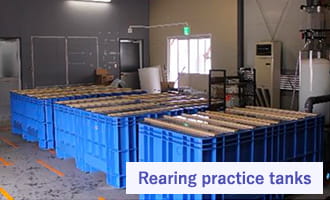
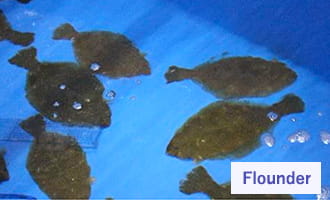
June 9
We found parasites in a fillet of weakened flounder Click here for details
After this, for preventing the spread of parasites, such as saltwater baths and the installation of UV disinfecting equipment, etc., were implemented.

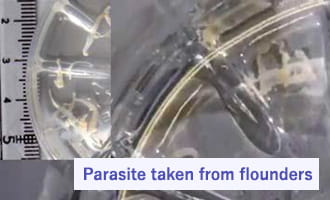
September
13
Start of rearing in rearing test tanks for getting flounder used to the environment Click here for details

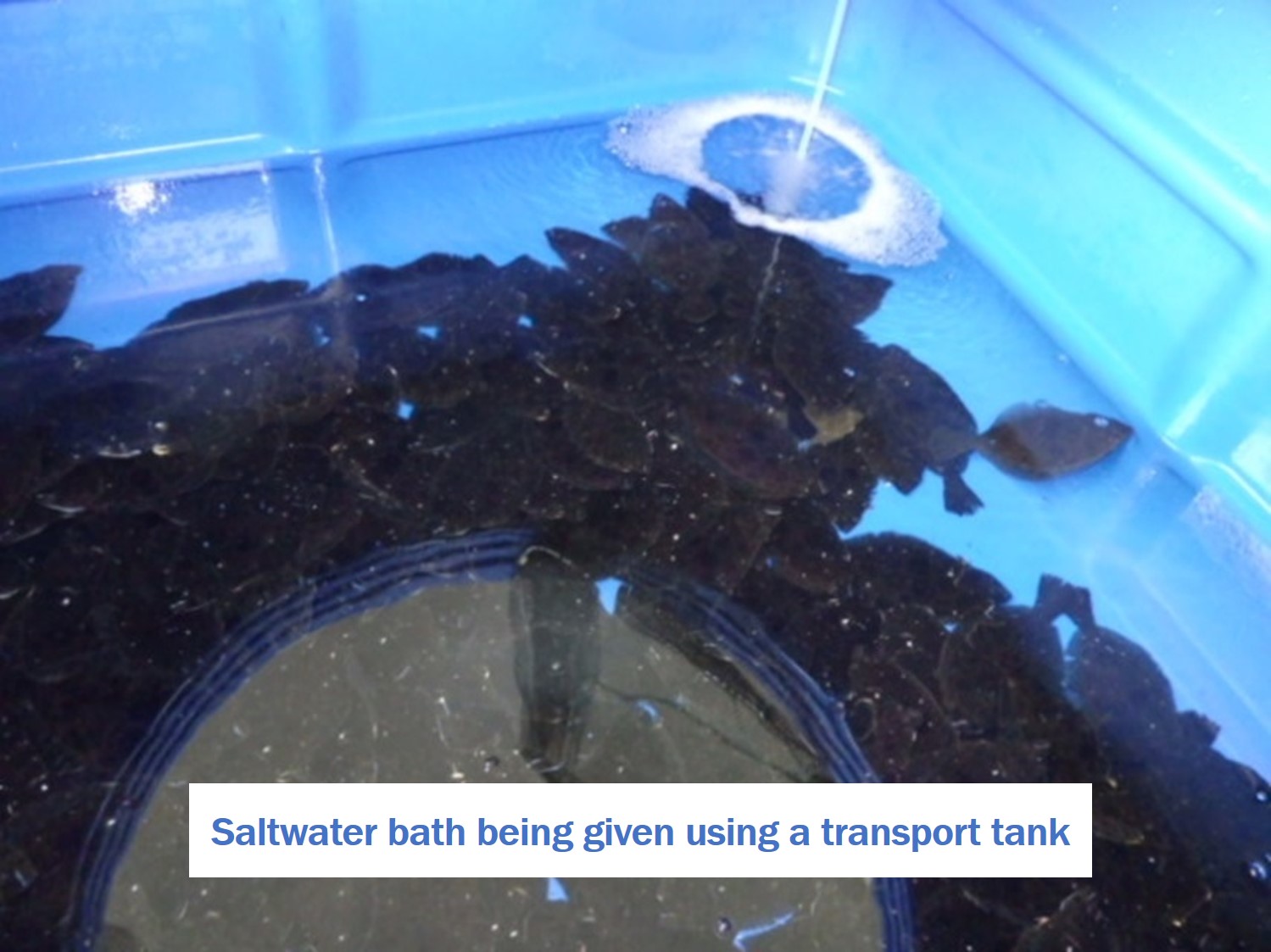
September
30
Start of flounder rearing test Click here for details
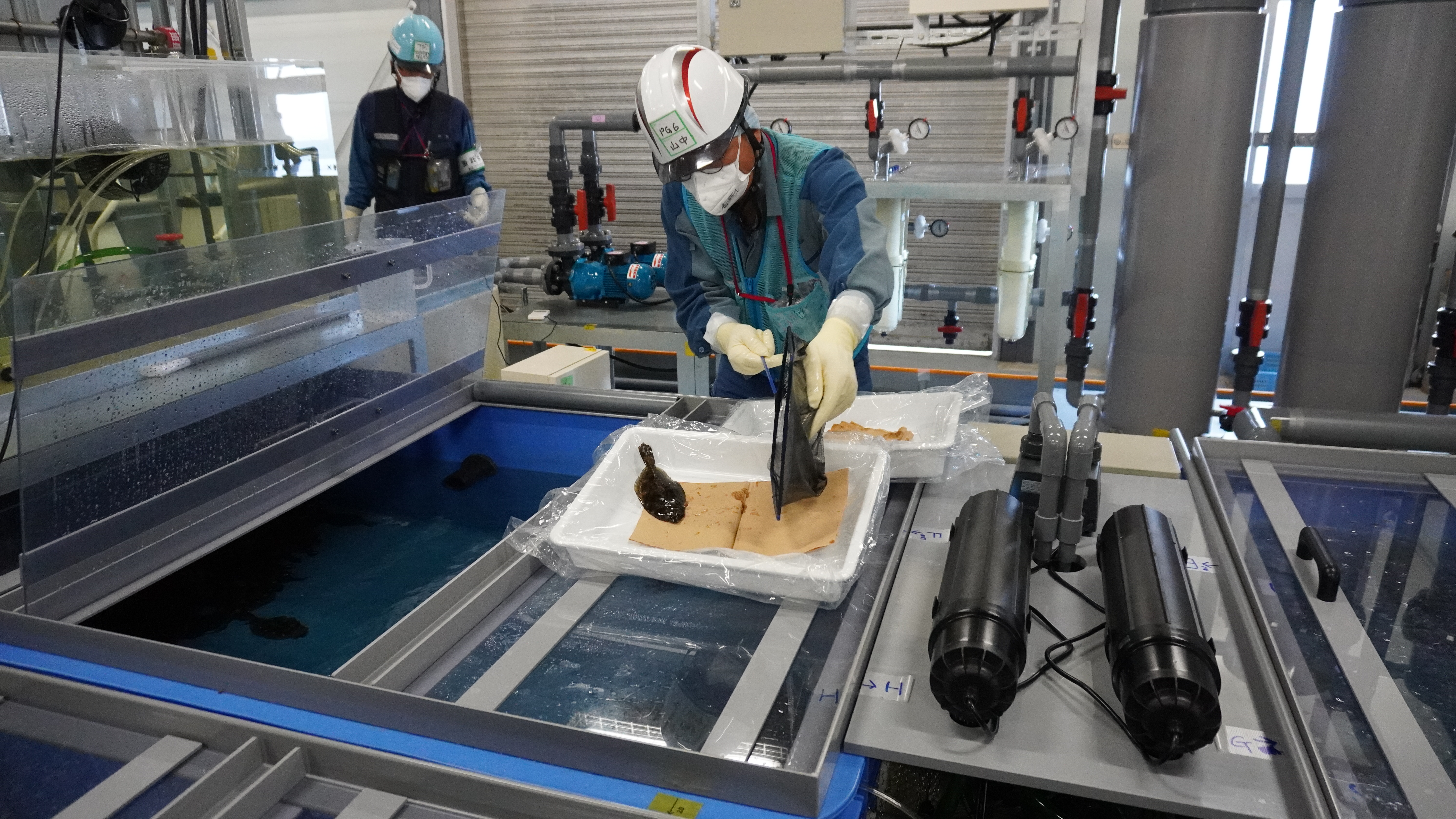
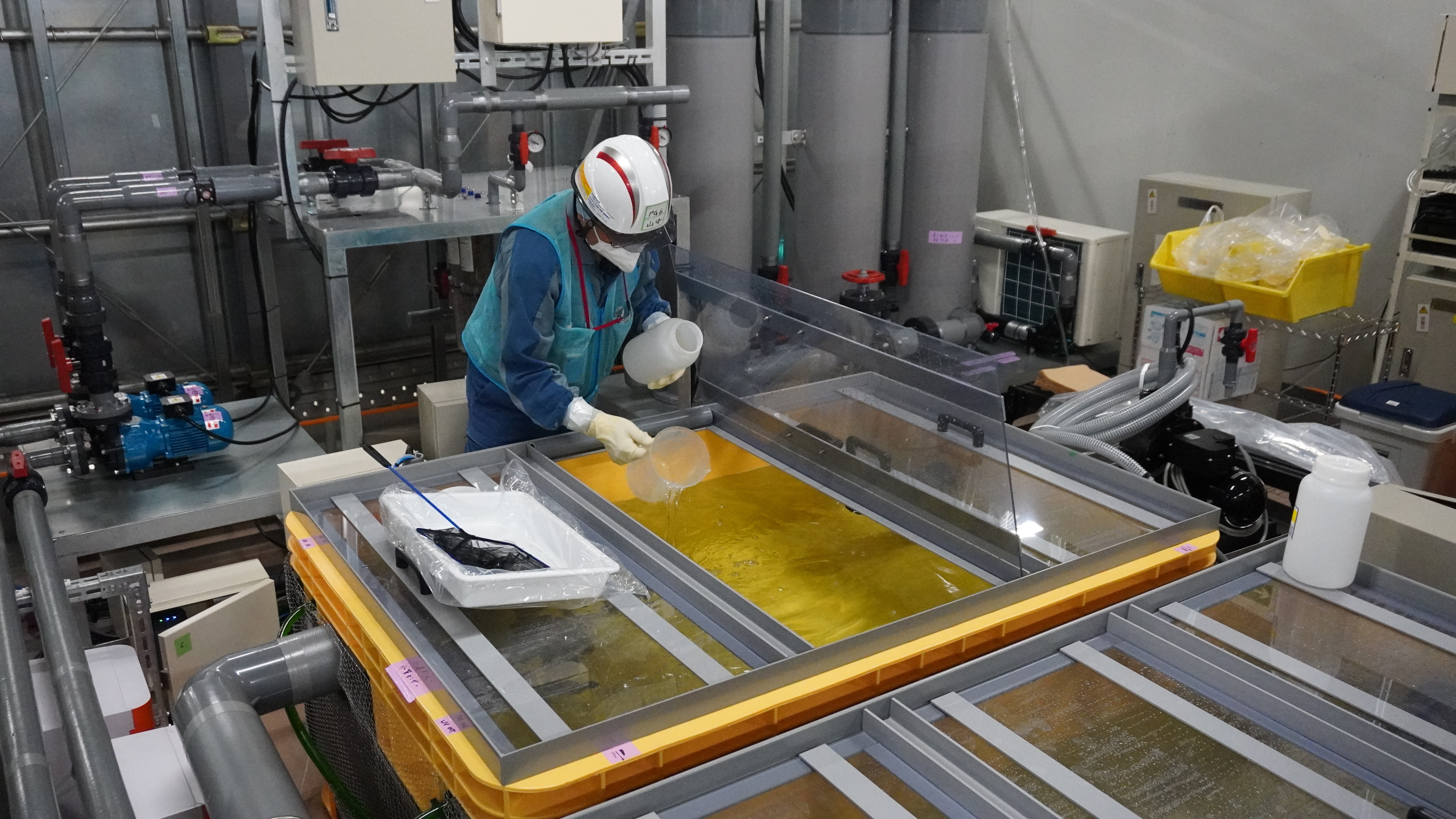
October
3
Added the ALPS treated water to the rearing mockup tanks Click here for details
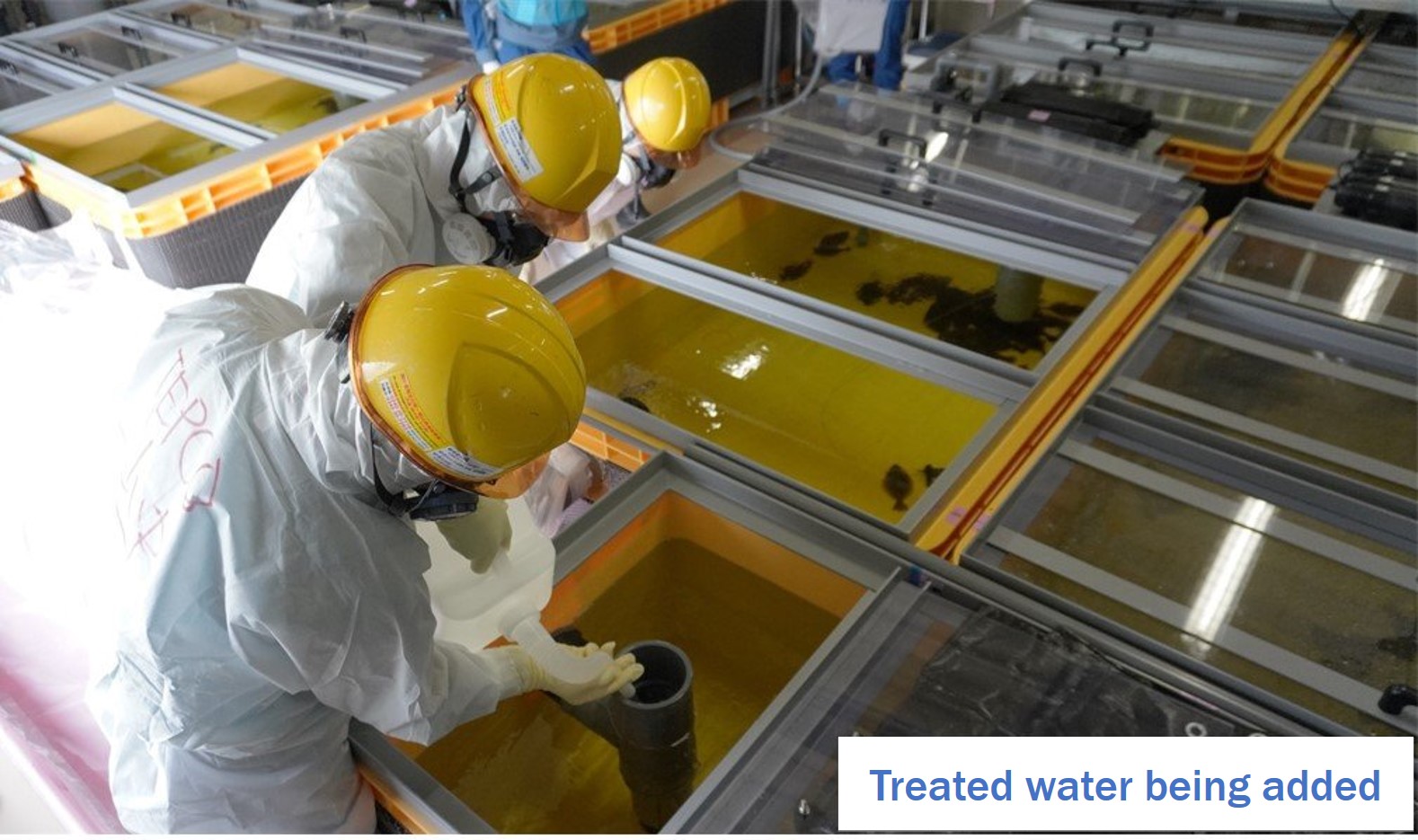
October
25
December
26
Published the results of intake and discharge tests of tritium (Free water tritium [hereinafter referred to as "FWT"]) in flounder body fluid in "Marine Organisms Rearing Log" Click here for details
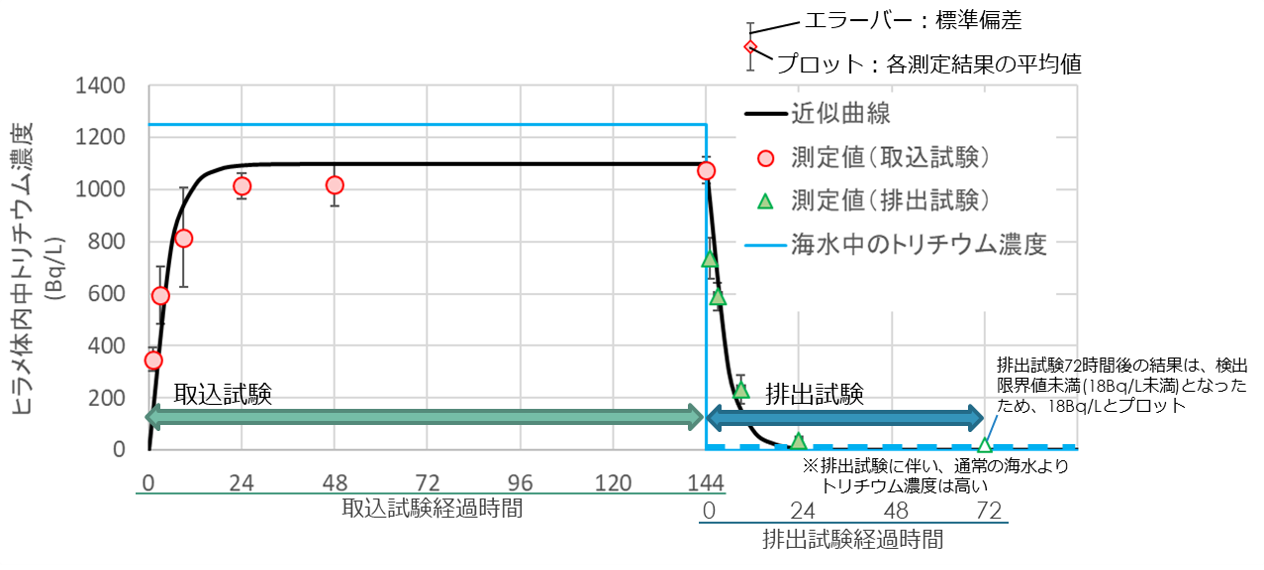
2023
May
1
Published the results of intake and discharge tests of FWT in abalones in "Marine Organisms Rearing Log" Click here for details
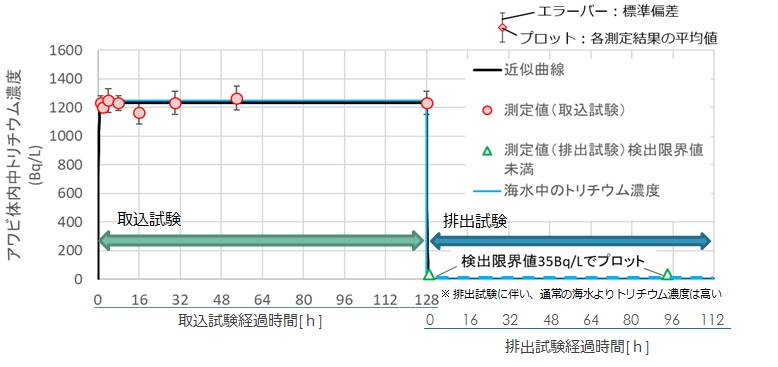
May
9
May
10
Check the growth conditions of flounders and abalones by a Marine Organisms professional Click here for details
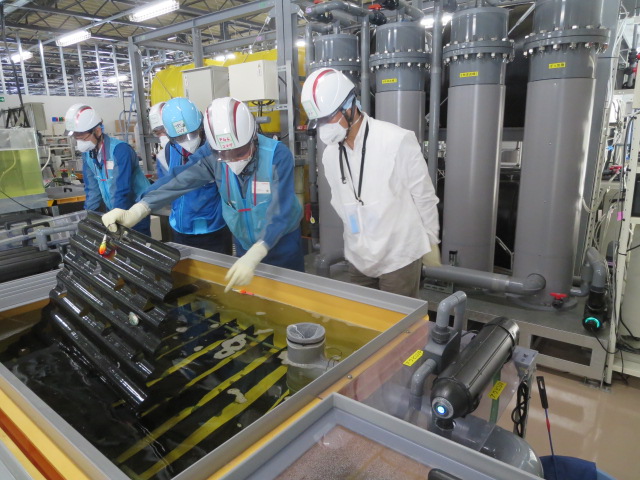
May
31
Published the results of intake and discharge tests of FWT in seaweed in "Marine Organisms Rearing Log" Click here for details
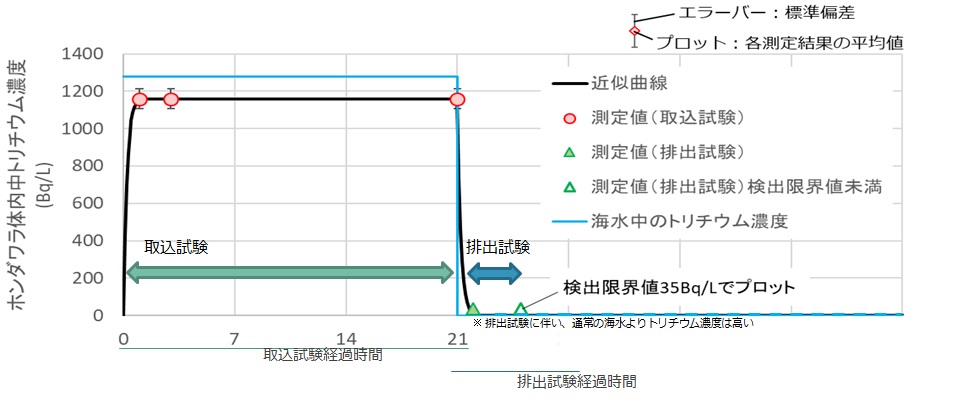
December
11
Published the results of intake tests of tritium (Organically bound tritium [hereinafter referred to as "OBT"]) in flounder muscle in "Marine Organisms Rearing Log" Click here for details
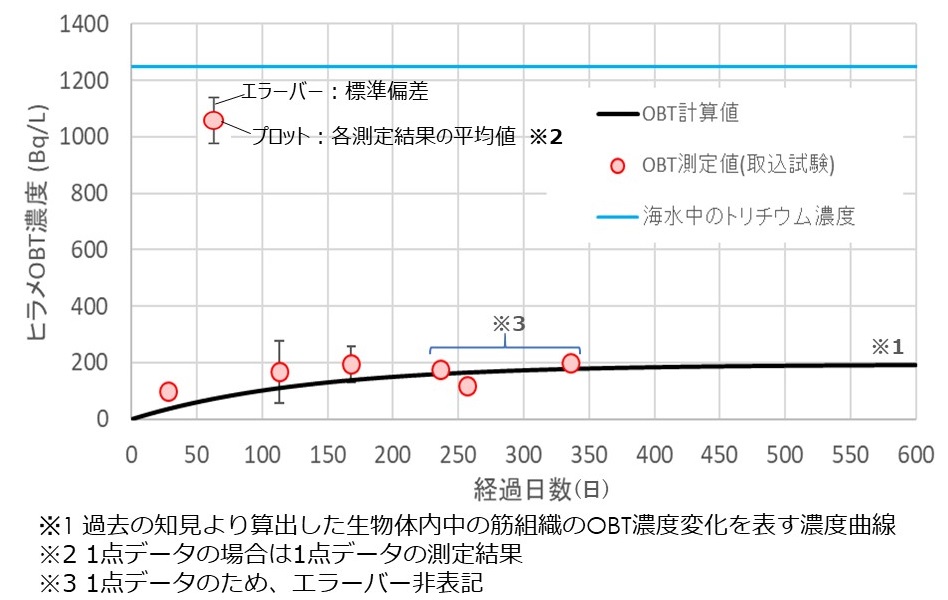
2024
January
10
October
15
Rearing of flounders and abalones begins using water that was discharged into the environment Click here for details
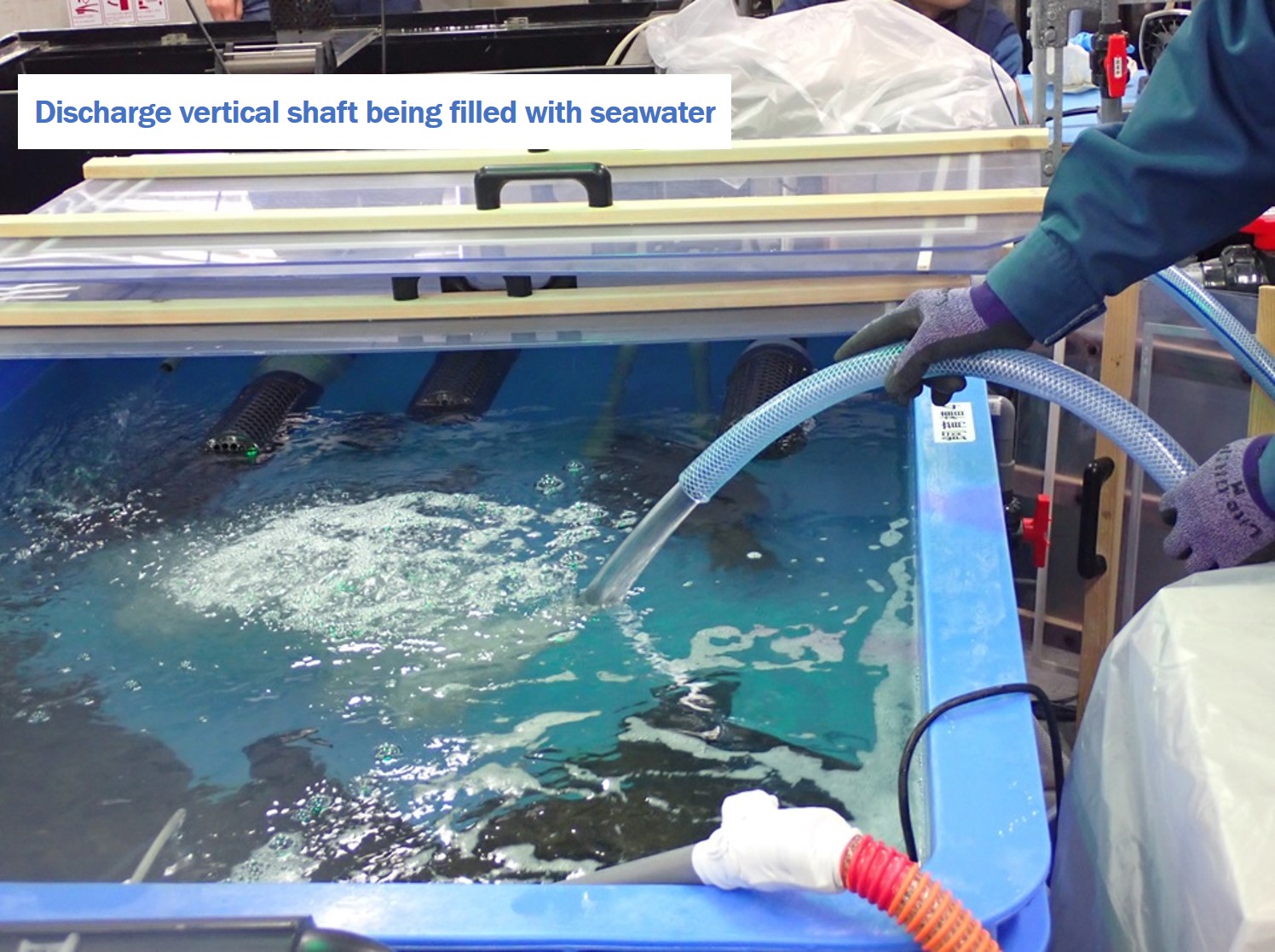
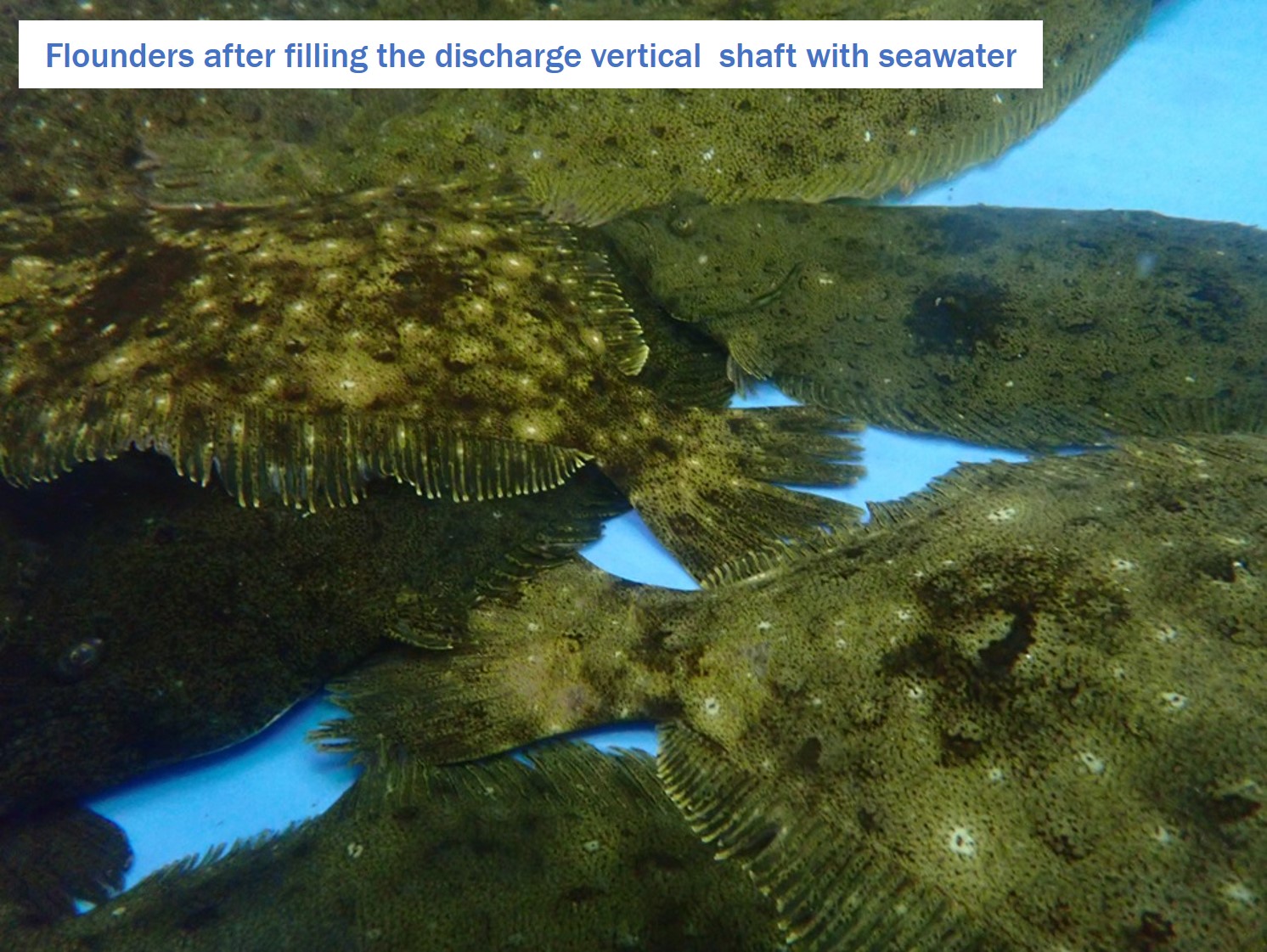
2025
March 27
The results of intake and discharge tests of Organic Bound Tritium in flounder over two and a half years were published in "Marine Organisms Rearing Log." Click here for details
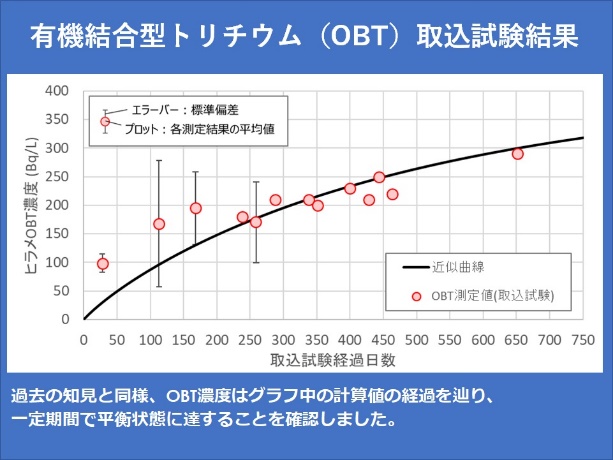
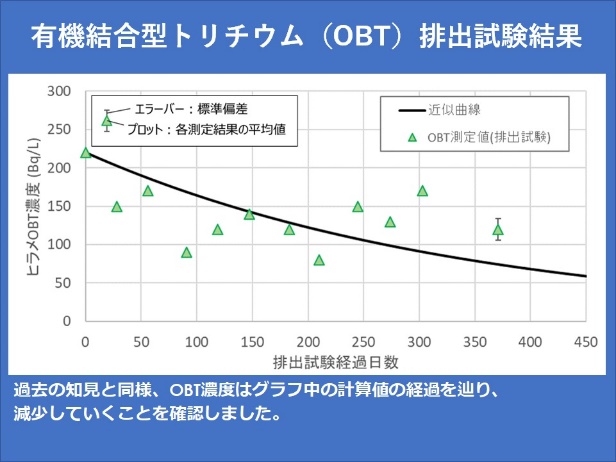
March 28
March 31
Marine organisms rearing log was terminated. Click here for details



